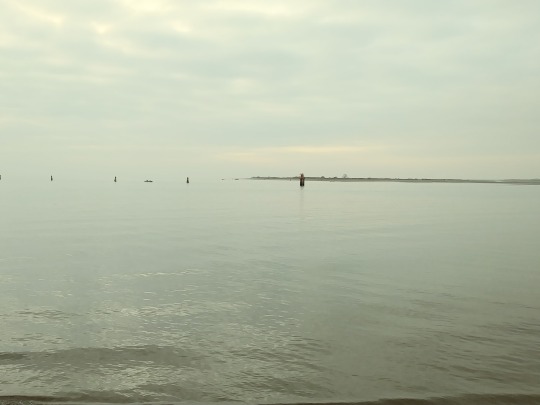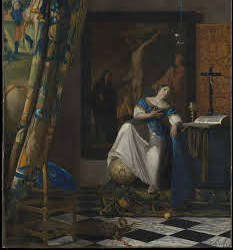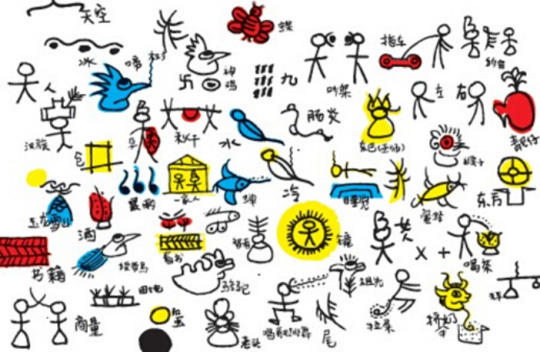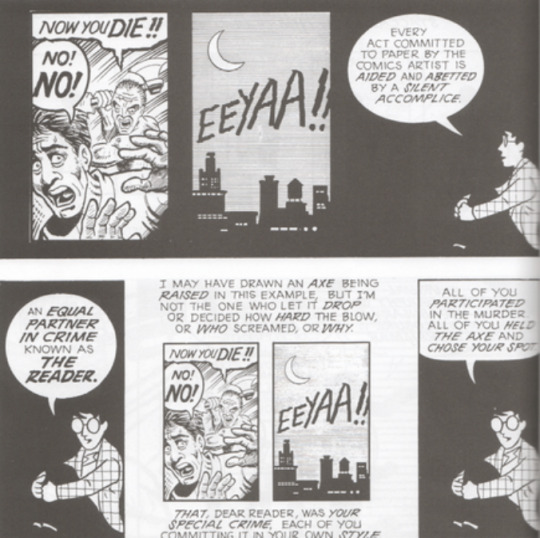#inventing new discourse for the enclosure
Explore tagged Tumblr posts
Text
"Steven Universe Gays vs Ketamine Gays" Steven Universe himself is on ketamine. did you ever think about that.
210 notes
·
View notes
Quote
This chapter began by reflecting on the social as the foundation of democracy, the centrality of equality to any concept and practice of democratic politics, and why social justice is there- fore important to generating and protecting democratic practices and institutions. It concludes by reflecting on why the social matters for generating and protecting a democratic imaginary. In Land and Sea, Carl Schmitt writes, “every ordering of human affairs also materializes in an ordering of space. Consequently, revolutions of human societies always also involve alteration of our conceptions of space. Schmitt develops this point differently in Nomos of the Earth, where he says, “every new age and every new epoch in the coexistence of peoples . . . and power formations of every sort, is founded on new spatial divisions, new enclosures, and new spatial orders of the earth.” In both texts, Schmitt is referring to physical, geopolitical space—annexations, subdivisions, the loss of coastlines, or even dissolutions of nations or inventions of new ones— the kinds of reorganization that often precipitate and follow wars. However, his point bears on nonliteral and even deterritorialized spatialization, such as the neoliberal dismantling and disintegration of the social. Schmitt reminds us that space is not just an architecture for power, but the scene of political imagination and imaginaries. Human orderings of space and the meanings attributed to those orderings shape our conceptualizations of who and what we are, especially in life with others. These orderings may foreground hemispheric locations or topographical features: a nation loses its sea in postwar settlements, a dam changes a river to a lake, a neighborhood is cleaved by the building of a highway or a wall. But they also feature designations of public and private space, gendered space, racialized space, and more. We know this from protests in everything from Little Rock to Gezi Park, from the privatization of public lands to struggles over gentrification and gender- neutral bathrooms. We do not just live in marked territories, but also develop political imaginaries of the common (or lack of it) from spatial semiotics. Alexander Somek draws a second insight from Schmitt’s Land and Sea. This is the link Schmitt establishes between spatial orders and eschatological views. Somek writes, “Schmitt makes us realise . . . that alterations of the order of space also engage . . . the spatial dimension along which we imagine better worlds to arise in the future.” Simply put, we envision pos- sible futures from and in terms of spatial orders of our present, especially in terms of their divisions and coordinates. This insight is significant in considering the implications of dismantling society and producing in its stead an engorged sphere of traditional morality and an expanded operation of markets. As the social vanishes from our ideas, speech, and experience, it vanishes from our visions of the future, both utopian and dystopian. We imagine authoritarian nationalist futures, virtually networked futures, technocratic futures, anarchist futures, transnational cosmopolitan futures, and fascist futures. We speak in vague terms of the “multitude” or ���the commons,” absent the concrete democratization of the powers they harbor and by which they would be stewarded. None of these aim to invent twenty-first-century possibilities for democratic rule achieved and supported in part by democratizing social power. None work at the site of social power, even as such power continues to generate domination, stratification, exploitation, exclusion, and abjection. And none gather us as a society to deliberate about and rule society in common. The precise lan- guage is fungible— “the social” and “society” are hardly the only terms that can capture these powers and this gathering. However, something must approximate them to build the political equality required by democratic aspirations. It is a sign of the triumph of neoliberal reason that, in recent decades, the grammar of the social, including its importance to democracy, largely vanished from Left (and not only Right) visions for the future. In the United States, Occupy Wall Street may be credited with pushing it back into public discourse. More recently, new notions of socialism and projects such as the Green New Deal have been mobilized to call for political stewardship of social welfare, broadly conceived. Still broken, and absent from these important discourses of rebellion against neoliberalism’s aim to vanquish society and the social, is the relation of the social to democratic rule.
Wendy Brown, In the Ruins of Neoliberalism
45 notes
·
View notes
Text
The void, the light, the sex
In " Midnight’s childrens" Salman Rushdie recounts that, in India at the end of the 1940s, to circumvent the rule that on the film screen prevented lovers from touching themselves, to avoid corrupting the youth of the country, he invented a brilliant device: They kissed the objects. So, a lover kissed an apple and then passed it on to his boyfriend’s passionate lips and so on with various props: from fruit to swords to teacups. The indirect kiss was born which, Rushdie writes, represented "an infinitely more refined conception of everything we see in cinema today and really full of desire and eroticism". Yet, unfortunately, its success was fleeting.

*
And the season in which we were convinced that the "indirect life", the Net stands between us and the rest of the world during the first lockdown , even with some sacrifices, could worthily substitute for everyday life ended. In the second enclosure (in Italy lockdown can not be said) have practically disappeared the thousands of conferences/ exhibitions/ videos that have flooded the first and in general has passed from we are all on the same boat to a widespread astiosità.
Now, apart from the fact that the nostalgia of pre covid everyday life leads us to assume it as a private normality of a critical vision, it seems to us that we can define this period as an acceleration/explication of processes that have been going on for some time. We take poor Debord when he said that in the Market (he said in the Show): "Everything that was directly lived has moved away in a representation-... the show is not a supplement to the real world, its decoration overlaid. It is the heart of the unrealism of the real world".
It does not mean to trace a continuity: the acceleration was so great that it also became qualitative, but to question the "we will come back as before". Since we in the market have found that the reduction of rights has been taken without problems, it cannot be the prolongation of this condition that is the cause of the general discontent, or at least not the only one. It may be, however, at least in part, the increased awareness that the first will not return. After all, the joyful journey that we had already begun towards the exchange between our, now useless, autonomy and the phantasmatic flow of goods offered by the changing Market will not, at this point, be able to consolidate and restart. The distance between the innovation of the Market and the resistance of old habits, tends, sometimes and only for a while, to create discomfort.
Until now, therefore, we have avoided offering ourselves an apple to the indirect kiss of the Net. We already have in other articles motivated because, during the first lockdown, we did not recommend books, movies or made videos etc. On the other hand, one of our little habits is to recommend some text, usually in summer (here you can find that of last year).
However, at this stage when such advice, as I said, does not seem to be well accepted or required, it seems to us the best one to do so, loving the idea that it is unheard of advice.
The sex life of Immanuel Kant
Jean Baptiste Botul
Let us imagine that in 1945, when the Red Army entered Königsberg, a handful of families began an extraordinary journey that led them to the foundation of New Königsberg in Paraguay. We also assume that these families idolize Kant, the most famous of their fellow citizens, and live like him, dress like him etc. A fundamental problem arises: if Kant lived in chastity, how can a community inspired by him not become extinct? The text contains a series of lectures, collected by Frédéric Pagès, held by the philosopher Jean Baptiste Botul to the attentive community of Kantians.
Botul raises a series of questions about the contrast between philosophy and marriage and more generally between philosophy and life. To respond, read again the Kantiane categories in this perspective. The thing in itself can only be sex (and in fact Kant develops a fetishism), metaphysics the desire to look under the skirts of reality and criticism, therefore, the attempt to harness it. Even the reasoned reading of the letters is interesting. Dear Marie Charlotte Jacobi invites the great thinker to find her and among other things writes : I will wait for you and my watch will be recharged". An extremely obscure phrase, but not for Botul who connects us to Kant’s stockings. Being a famous hypochondriac, the philosopher refused the use of garters fearing their pressure on the arteries. To hold the stockings he used the case of a watch with the respective spring, through which he adjusted the pressure of the wire. In this perspective, evidently, Maria Charlotte was making a clear sexual invitation.
This book is particularly dear to us because it made ridiculous the obnoxious Bernard-Henri Lévy, who did not realize, despite the hilarious conclusions of the lectures, that the philosopher Botul was but an invention of Frédéric Pagès and quoted it in his essay.
original book
The ambition of Vermeer
Daniel Arasse
Why take care of Vermeer, since we define ourselves as a collective research of the contemporary? In fact it is to highlight how in this text by Daniel Arasse we avoid some clichés that now characterize the readings of the sphinx of Deft (including this nickname attached to poor Vermeer). After all, compared to his great contemporaries (recently we mentioned Metzu), from the first major modern exhibition dedicated to Dutch painting to today, ours has always attracted attention for its specificity, often attributed to a sort of enigmatic aura.
Arasse analyzing life, debunking the myth of his being misunderstood, and especially in detail the works shows how, instead, the effect of his paintings is a deliberate artistic choice of Vermeer. The fame of the painter is that of "fine painter" that can be translated into meticulous and meticulous. It is an obvious contradiction to the fact that Vermeer paints in nuance, even in the smallest of canvases (La merlettaia, 24*21 cm).
On the other hand, the fact that the "realism" of Vermeer’s paintings is actually more a search for coherence and balance, or disequilibrium, within the canvas itself can have many examples: from the semi-finished bulb hand of the Art of Painting (1665-1666) to the picture in the picture of the Woman with Libra, which goes lower to the right of the female figure than to the left (certainly not by mistake).
We could give several examples, such as the use of perspective from below, but, to demonstrate his conscious poetic research, it seems useful to us the use of light, which is often cited as a characteristic evidence of the painter’s finesse. In the Allegory of the Catholic faith the window, which illuminates the scene, is ajar. This, in addition to being an indicator of the author’s Catholic faith for which faith (light) must be found through darkness, serves in the representation to: indicate that with regard to the picture the light has placed the author, prevent the windows from being reflected in the glass sphere hanging above the head of the protagonist. The sphere is a recurrent element in many canvases of the time, but normally it acts as a mirror both for things (in this case it could easily reflect a cross) and for people, often a self-portrait. Vermeer instead makes them represent only light and color, represented by colored spots.
That then, more than the other painters of his time, Vermeer could take the luxury of creating his own poetics and sometimes get out of the clichés of contemporary representations (for example, not executing portraits) it is due to the fact that, having other proceeds, Painting was not for him a source of income. So much so that you can paint 2, 3 paintings a year and keep some paintings (even as challenging as the Art of painting) for yourself.

Aesthetics of the Void - art and meditation in oriental cultures
Giangiorgio Pasqualotto
Which east and which cultures? It’s a necessary question to avoid falling into false generalizations. Well here we talk about Japan and China and more specifically classical Taoism and Buddhism, as well as Chan and Zen Buddhism.
In essence it is argued, and certainly not a novelty since the text is part of a path of secular studies, which unlike the West, which fears the void, in these cultures it is the central core from which the energies and aesthetic provisions are directed. Provided we understand: the void is not interpreted as nothing, as not being, as the concept of emptiness but as the experience of emptiness, not being, as you can get with specific forms of meditation.
Meditation that is not prayer, no one is invoked, but it is focused attention to what happens in the heads, in the body and in the world. Such a practice is necessary to produce or enjoy such an aesthetic experience, the latter being itself a form of meditative exercise.
From here the author analyzes various forms of Chinese and Japanese art, giving an interpretation of its own starting from an in-depth analysis of the void (and of its dialectical opposite the full) in these cultures, and is the original character of the book. We will therefore understand why in the tea ceremony the path that crosses the garden that leads to the Sun (tea room) must be made of stones at a distance varying from each other, Because in haiku there cannot be a subject or that in ikebana symbolically the vertical branch stands for the sky, the median for man and the horizontal for the earth. We are particularly interested in the discourse on the theater no, if only because by poor Westerners hating the void, is what we have so far understood the least.

*photos are taken at the same time in the same place the days before the lockdown
there is no English version. we recommend this:
Francois Cheng Empty and Full: The Language of Chinese Painting
0 notes
Text
Blog·3:Using inconsecutive comics as language
The popularity of characters maybe has let people forget that characters were invented. All characters in the word have been through the development process from symbols to characters. About thirty thousand years ago, humans started using images to tell stories: the original shape of ancient Mesopotamia characters were some simple graphic designs which were gradually transformed into cuneiforms. In most of times in the human history, it was the image system that was applied, from the original graphics on the wall to Ancient Egypt, then to the pure character system people are using now. Although current language is very simple and effective, it is not an instinctive expression way for humans but requires a long time of study. People start to learn characters from childhood. But characters are the most abstract symbols in the world. When people are learning and use more and more of these abstract symbols, their ability of figurative and visual expression is gradually weakened. In other words, characters defeated graphics and dominated human language.

Graphic is the information that can be “received”. People don’t need official education to read graphic information. Its message is instantaneous. While character is “perceived” information. People need take time and use special knowledge to decode the language that is composed of abstract symbols. When people were young, the first book they read has a lot of images and very little texts because it is simpler. After that, as we grow older, the adults expect us to read the books with mostly texts and occasional images and then read these “real” books – with no graphics at all. In another way, imagine a child is using the way of “show and tell” to display his toys because his ability of “tell” is not mature yet. He mainly expresses the complex functions of toys through “show”.
Modern comic artist Chris Ware publicly declare in the McSweeny’s (Issue 13) that “Comics are not a genre, but a developing language”. Comic artists use their media to describe the characteristics of comics, like a language. The form of comics itself is a language. It is consecutive. The consecutive sequential graphics used in the comics construct their own “visual language”. Comics itself is not a language, but it is written in visual language, like novels and magazines are written by English, like the book Understanding Comics itself. The reason that comics become a very popular communication media, to a great extent, credit the art form of comics. The white spaces in between the comic storyboards give readers great imagination space. Readers can easily be immersive while reading outstanding comic works. Moreover, the expression steps in each storyboard of the comics are full of the emotions that is put into them by the authors themselves. This is incomparable to animation. For example, watching comics is like being introduced into an imagined world in which you become the protagonist to experience everything by yourself. However, animation is a like a TV drama in which you are just looking at various experiences and scenes that are preset by others and the pace of the plot is not controllable to writers which makes it hard to generate a strong sense of substitution.
In the book of Cott McCloud, the jumping (the time and special flow between frames) between two comic frames is categorized into 6 types according to its consecutiveness. 1.moment to moment 2.action to action 3.subject to subject: from one subject to another in the same event or scene, but the subject of the camera changes 4.scene to scene 5.aspect to aspect: this is probably what is called montage where there is no necessary consecutiveness between two frames but only the connection in concept and atmosphere 6.non-sequitur
In Understanding Comics, McCloud continued the America comic godfather, Will Eisner’s opinion of “comics is an art of consecutiveness” and defined comics as “consciously juxtaposed consecutive graphics” in which the foundation of juxtaposition is of course “frames” while making frames to be able to establish a mental mechanism that plays a “complemental” role in human perception. In the movies and comics, because of the consecutiveness of the images, we can hardly perceive the complementary effect. All of it is automatic under the unconsciousness. But comics is different.
No matter the size and shape of the frames or the pace change brought by different frames, these are the characteristics that other electronic media does not possess but only belong to “juxtaposed consecutive graphics”.
People complement the incomplete part into a complete status according to their experience. This phenomenon of picturing the perceived part into a whole has a name. It is called the perceptual closure.
People’s perceptual closure is well used in the comic creation. Compared with animation’s way of completely one-sided instilling into the audience, apparently, comics is superior in the interactivity between readers and authors.

The frames of the comics separate time and space, which allows several frames to form a staccato song of inconsecutive moments. But the perceptual enclosure allows us to connect these individual moments and create an integrated and consecutive world in our mind. In video films, perceptual enclosure is consecutive and not controllable and hardly perceptible. But in the comics, perceptual enclosure is completely not consecutive. All is controlled by the readers themselves.

In addition, he also mentioned the white space’s function of “slicing time” when he discussed “how comics express time”. If the intention is to prolong reader’s time perception, it only needs to slice the questions and answers in one frame into two frames, and we will feel like the time is longer. Others include increase “frame spacing/width of white space” or “increase the width of the frame”, which can all achieve the effect of time extension.

References:
Cohn, N. (2012). Comics, linguistics, and visual language: The past and future of a field. In Linguistics and the Study of Comics. Palgrave Macmillan,London, pp.92-118.
Miodrag, H. 2013, Comics and language: reimagining critical discourse on the form, University Press of Mississippi, Jackson.
McCloud, S. & Lappan, B. 1994, Understanding comics, HarperPerennial, New York.pp.50-58.pp.65-69.
0 notes